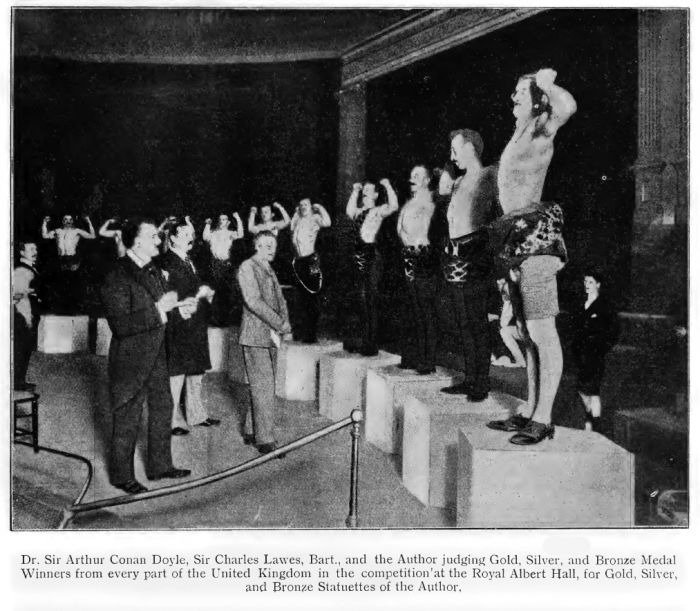Life is Movement



Life is Movement is a book written by Eugen Sandow published in september 1919 by The Family Encyclopaedia of Health (printed by Simson & Co.) and including a foreword written by Sir Arthur Conan Doyle.
The foreword was already published in 1907 in Eugen Sandow's book : The Construction and Reconstruction of the Human Body with 2 more paragraphs.
The book also included a photo of Arthur Conan Doyle acted as a judge at The Sandow Physical Culture Competition held at The Royal Albert Hall on 14 september 1901.
Foreword by Arthur Conan Doyle
In the course of a fairly busy literary life, in which I have essayed most things within the scope of a writer, I have never once had the experience of getting between an author and his audience by saying a few words in advance. There is an obvious impertinence in the intrusion. And yet here I find myself not only doing this very thing, but even going out of my way to volunteer for it. I can only excuse myself by my conviction of good work, the national work, which Mr. Eugen Sandow has done in this country, which makes it a duty to say a word, when one can, on its behalf.
If there were any antagonism between matter and spirit the case would be very different. If it could be shown that the body developed at the expense either of the mind or of the character, then physical degeneration might be accepted as the price which the human race must pay for its mental and spiritual advance. But the facts are the very opposite. Vice and ignorance are the companions of ugliness. That which is physically beautiful stands in the main for that which is mentally s.e, and spiritually sound. The classic ages of Greece, which showed the highest intellectual average seen in this world in a single population, produced also the finest physical types which the sculptor has ever committed to marble. The man who can raise the standard of physique in any country has done something to raise all other standards as well.
The strength of a nation is measured by the sum total of the strength of all the units which form it. It is a truism that anything which raises any portion of a man, his body, his character, his intelligence, increases to that extent the strength of the country to which he belongs. Therefore, since the State is so interested in these matters, it has every reason to examine into them and to regulate them. The truth is an obvious one, but it is only within our lifetime that it has been practically applied. "Parents may do what they like with their children. A man may do what he likes with himself." So ran the old heresy, which ignored the fact that the State must look after the health of its own component parts. Then came the Education Act of 1870. It was a great new departure. What it said was " No, your mind is not your own. It belongs to the State. Therefore we must force you to keep yourself in better order." That is as far as we have got yet in State ownership of the individual. But it is evident that the same principle may be applied to the body as well as the mind.
Meanwhile Mr. Eugen Sandow and his schools are doing some-thing — as much as a great expert can do—to fill this national want. He has first arrested the attention of our public, shown it the pristine perfection of the human body, and systematised the methods by which it may be preserved. It is my appreciation of the national quality of his services, and the really vital aim towards which they have been directed, which must be my excuse if for a moment I have intruded upon the patience of his readers. It is my firm conviction that few men have done more for this country during our generation than he, and that his schools have appreciably improved our physique. Every word which he writes upon the subject deserves the most careful consideration, not only of the general public, but also of the medical faculty with whom he has always loyally worked.
ARTHUR CONAN DOYLE.
Photos

Dr. Sir Arthur Conan Doyle, Sir Charles Lawes, Bart., and the Author judging Gold, Silver and Bronze Medal Winners from every part of the United Kingdom in the competition at the Royal Albert Hall, for Gold, Silver, and Bronze Statuettes of the Author.